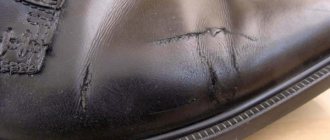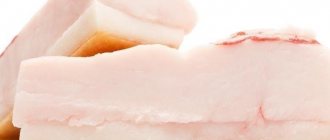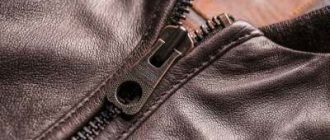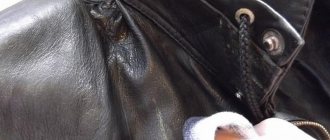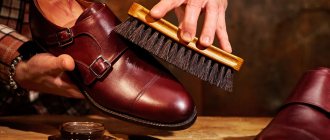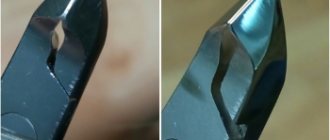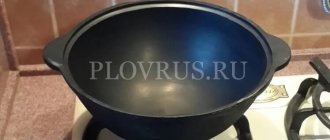Read: 375
Not only the external, but also the internal parts of the shoes are subject to constant contamination. And to a greater extent, the problem is typical for summer shoes and flip-flops, since its very specificity implies the presence of meshes through which dirt and dust can get in. Those same sandals have no protective surfaces at all. And on warm days, your feet sweat much more than on cold days. All this contributes to rapid contamination of the insole surface. How to deal with the problem correctly so as not to ruin an expensive pair of shoes? After reading the article, you will learn how to clean leather insoles with safe and affordable products. Thanks to practical experience, you will not expose expensive products to unnecessary risks.
How to clean the inside of leather shoes from dirt?
If severe contamination occurs, it is better to dry the shoes thoroughly, clean them of dirt, and then proceed with wet cleaning: wash with a solution of soapy water and ammonia. Light stains are best removed by dry cleaning: clean the surface with a soft flannel cloth or fine-lined sponge.
Interesting materials:
How to take a screenshot as a link? How to take a screenshot of a video from the screen? How to take a screenshot during a call on iPhone? How to take a screenshot of the entire screen? How to take a screenshot of an entire page on Android? How to take a screenshot of an entire page in Chrome? How to take a screenshot of a selected area? How to make a hidden folder on Mac? How to make a hidden folder on the desktop? How to make a hidden link in the text?
Specifics of leather as a material: what to pay attention to?
Since leather is a natural material, it is characterized by a fairly rapid appearance of defects associated with intensive use. It is characterized by increased sensitivity to moisture and stretching. You cannot get a leather insole wet, as it will quickly lose its shape and will not be suitable for further use.
For many girls, the question of how to clean the insole of leather sandals is especially relevant because it cannot be removed from the shoe. That is, getting rid of unpleasant odors and stains will have to take into account the external and internal materials of the shoes, which only adds to the hassle.
What products should never be used?
Before choosing a technology for how to clean a leather insole in shoes without spending too much money on it, you must first consider options for solving the problem that should be abandoned (unless you are ready to spend money on buying a new pair):
- soap is the main enemy for materials such as suede, leather and nubuck; soap solution cannot be used to clean leather insoles, as it can change the structure of the leather, make the material too soft or, on the contrary, hard;
- household chemicals, washing powders and other detergents will 100% damage the product beyond the possibility of its restoration;
- acetone can have a bleaching effect.
Shoe care tips
To ensure that your shoes serve you for many years and always look impeccable, and you don’t have to wash your leather shoes often, listen to the following tips:
- If your boots are dry, rub castor or vegetable oil into them and then polish them. The oil will soften the skin.
- Shoes can be made practically waterproof by lubricating them several times with linseed oil along the seams. And if you want to achieve long-term and high-quality results, but buying expensive professional products is not part of your plans, click on the link where we have collected the simplest and most effective recipes for DIY water-repellent impregnations for shoes.
- Clean suede boots with the rough surface of a matchbox or the crust of stale bread.
- Brown leather shoes can be easily cleaned with coffee grounds.
- If wet leather shoes become hard, rub them with Vaseline after drying. After a few hours, clean with cream. Remove small stains with a regular eraser.
- Remove greasy stains on leather shoes with a solution of soda (1 teaspoon of soda per 0.5 cup of water). Rub until foam forms, then remove with a soft cloth.
- To wash leather shoes and remove traces of dirt and old cream, use a special shampoo or a regular glass cleaner. Wet a cloth with the product and wipe first one shoe and then the other. Afterwards, apply any fat and let it absorb. Fat perfectly repels water and will prevent the skin from decomposing and deforming. After treatment, apply cream and polish the shoes.
- Don't wear the same pair of shoes every day. Assemble a “bench of spares”, with a working mode of at least “two in two”. When going out, place a pair of shoes with the lasts facing inward so that the shoes don’t lose their shape and don’t turn up their toes.
- To prevent fashion leather shoes from losing their attractive appearance, use rubber galoshes during the rainy season. This is the best way to protect shoes from water.
Characteristics of orthopedic insoles
Orthopedic insoles promote the correct formation of the arch of the foot, support weight, and prevent diseases of the musculoskeletal system. They reduce stress when walking after various injuries, help with foot defects, and reduce the load on the joints.
Orthopedic models are made from leather and polymers of the highest quality. You can find silicone and gel models. Silicone insoles provide a slight bounce when walking, which relaxes the tendons of the legs, improves blood circulation and reduces muscle fatigue. They provide additional comfort and cushioning.
Orthopedic shoe inserts are durable and wear-resistant, safe and hypoallergenic. They absorb excess moisture well and are characterized by high shock absorption and ventilation.
Features of care for textile shoes
Textile models can be washed in a washing machine. However, sometimes machine washing leads to damage to the product. Manual cleaning is more difficult, but safe. To clean shoes manually you will need:
First, remove the laces and remove decorative elements that can be removed. Dry dirt and dust are removed with a soft brush. Fill a sink or basin with warm water and add tbsp. l. baking soda. A brush or dishwashing sponge is soaked in the solution and scrubbed across the soles of the shoes until all dirt affecting the tread is removed. It's best not to immerse your shoes in water, as this can weaken the adhesive that holds the material together.
After the sole is cleaned, the water is drained. Then pour clean water and add 2 tablespoons of washing powder or dishwashing liquid. Use a sponge or brush to remove dirt from the surface of the fabric. Use a clean rag to remove any remaining foam, and use a towel to remove excess water from the fabric.
The boots can be stuffed with paper to help them retain their shape and left to air dry. Drying near direct heat or artificial sunlight should be avoided as this may further weaken the adhesive and affect the texture of the fabric. Before putting your shoes back on, make sure they are completely dry.
Rules for cleaning shoes made of natural and artificial leather
Rain, snow, slush and industrial reagents that are used on sidewalks in winter have a detrimental effect on natural and artificial leather.
To increase the lifespan of each pair, you should know how to properly clean leather shoes
Therefore, in order for boots, boots or shoes to retain their presentable appearance and serve for a long period, it is worth cleaning them every time after wearing. And once a week, carry out general cleaning of the couples.
Basic Rules:
- Cleaning outside. For minor stains, simply wipe the top layer and sole with a damp cloth. To remove heavy dirt, soak a cloth in water and add special shampoo. Squeeze thoroughly and then wipe. Start the procedure with the heel, then gradually move to the sole, and clean the top layer at the end.
- Wiping dry. After removing dirt, wipe the top layer with a dry flannel or cotton material.
- Drying. After wet cleaning, allow the product to dry. Remove the insoles, place old newspapers in the middle, and leave to dry naturally. The use of heating devices and dryers is strictly prohibited: they contribute to the drying of the material and deform it.
- Skin nutrition. After drying, the top layer becomes matte, so the cream will return it to its former shine. It must be applied in an even layer and left to soak overnight. It is recommended to use the cream in a skin tone or colorless. In the morning, remove the residue with a sponge. Apply the cream 2 times a week.
- Water-repellent impregnation. It is recommended to use it during the off-season and winter. You should spray the impregnation overnight and polish the top in the morning. This procedure will prevent moisture from entering the structure of the material and will significantly extend its service life. In case of low humidity, apply impregnation once a month, and in rainy weather - once every 5-7 days.
Attention! When wet, leather tends to darken, which only confirms its quality. After drying, the tone evens out.
Additional recommendations
After the shoes have been cleaned and the unpleasant odor has been eliminated, it is important to keep the shoes clean and prevent the reappearance of “odors”:
- After wearing, leave the shoes open: the tops of the boots and the lacing of the shoes should open the inner surface as much as possible so that it has time to ventilate and dry before putting it on.
- It is recommended to have at least two pairs of shoes, which can be alternated every other day: the shoes will have time to “rest” and air out.
- Worn, uncleaned shoes should not be put into boxes for long-term storage: dirt should be removed and allowed to air out.
- A favorite way for some men is to kill two birds with one stone by stuffing their socks into their sneakers immediately after wearing them: a recipe for odor and creating an unventilated environment for germs to breed.
- And socks: it’s better if they are made from natural materials: synthetics in any form disrupt natural ventilation, increase sweating and give rise to a pungent odor.
Clean outside and inside men's shoes
You can learn how to wash winter boots, combat boots, boots or ankle boots when purchasing these shoes in a store. Even professional-quality shoes require proper and regular care: regular cleaning and care of both the outer surface of shoes, boots, slippers and sports sneakers, as well as the inner surface, will extend the life of the shoes and save money, providing a healthy and beneficial microclimate for the feet.
Finished models
- Treat your shoes with a special water-repellent agent, such as castor oil, or apply mink oil and let the product absorb.
- Apply a good shoe polish to the surface of the products. If the shoes are new, then you can limit yourself to colorless cream.
- Refresh dull shoes with a cream with a tone slightly lighter than that of the shoes.
- Polish your boots until they shine with velvet cloth or a piece of velvet cloth.
You cannot wash shoes made of suede or nubuck; these materials deteriorate when exposed to moisture. Therefore, cleaning should only be done with a dry cloth or soft brush. In order for the pile to straighten and dirt and dust to be removed more easily, the shoes should be held over the steam of a boiling kettle. Stains and stubborn dirt can be removed using an eraser.
Removing stains
There may be times when a stain needs to be removed. There are products that can be used to clean any shoes, including demi-season and winter ones. Most often, stains occur on shoes made of fabric. In this case you can use:
When using chemicals, it is necessary to apply a small amount of the composition to an inconspicuous area on the inside and check how the fabric behaves. Only after this can you begin to remove the stain on the outside of the shoe.
After the stain is removed, you need to treat the surface with a damp and then dry cloth. Aggressive products should never be used on leather shoes or leatherette models. There is a high risk of rubbing off the paint from your shoes and getting an even more noticeable stain.
If stains have formed on leather shoes or boots, you can only use gentle folk remedies. If there is no effect, you will have to turn to a special cream or paint for shoes.
But the most effective way to keep white shoes in excellent condition is prevention. This includes: daily care of shoes, removal of dirt immediately, careful handling. For example, in rainy, slushy weather, you can avoid wearing white boots or shoes, or treat them with a special spray or wax with a water-repellent effect before leaving the house.
Cleaning the sole
The white sole is what gets dirty first and will have to be cleaned quite often. Fortunately, the sole is not made of leather, the material is not so capricious, and you can give it the same white color without particularly skimping on funds.
- If the contamination is not very strong, you can use the “dry method”. We wipe the dust off the shoes with a clean, dry cloth, and then use an eraser and clean the side of the sole with it. The method works, but it requires effort and time.
- In the case where the contamination is more serious and cannot be removed by an eraser or a patterned sole (an eraser cannot always cope with grooved areas), we use water with soap , powder or soda . First, we mechanically remove the main dirt from the sole and remove the stuck pebbles. Then take an old toothbrush , apply the chosen cleanser and wash thoroughly, being careful not to wet the skin. Wipe dry. The result depends not so much on the choice of cleaning product, but on the efforts made.
- We bleach the sole. You can bleach the sole with a solution of bleach (according to the instructions for removing stains from surfaces), a solution of table vinegar (9%) in a 1:3 ratio to water, and if all the previous did not help, with acetone or nail polish remover. The procedure is as follows: put on gloves, take a white undyed cloth or cotton pads, soak them in the selected liquid and treat a small, inconspicuous area of the sole to check. We wait about half an hour and see if the surface has deteriorated or turned yellow. If everything is in order, the product can be used for bleaching: soak a white cloth or a piece of cotton wool in it and rub the side of the sole ( colored rags cannot be used , they can leave stains on the shoes). At the end of the procedure, wipe dry.
- professional sole care products on sale (erasers made of porous material, sponges, liquids, etc.), you can use them or take your shoes to the dry cleaner.
Yellowed soles cannot always be cleaned even with professional products or dry cleaning. If you constantly dry your sneakers near the radiator (especially on top of the radiator), the soles may turn yellow, and it will no longer be possible to bleach them.
